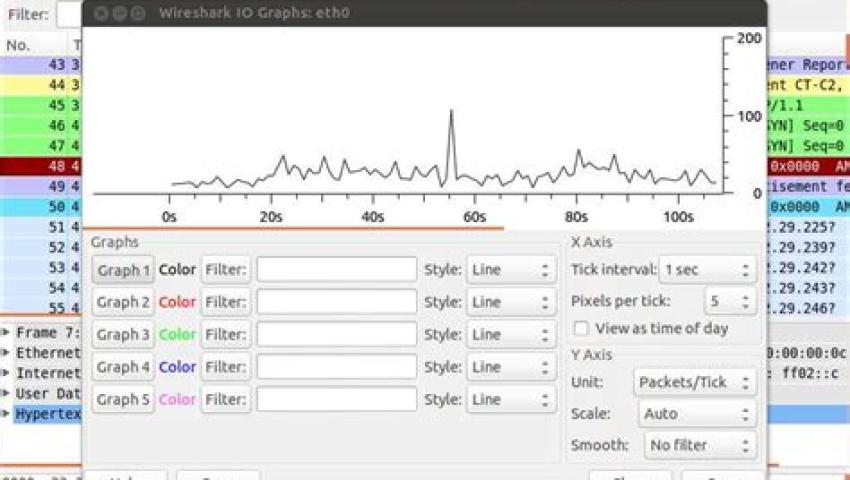
Top 5 Network Sniffing Tools Every Hacker Should Know About
Network sniffing, also known as packet sniffing or network traffic analysis, is an essential skill for hackers, security professionals, and anyone interested in understanding network security. This technique involves capturing and inspecting the data traveling through a network, allowing an individual to understand communication patterns, identify vulnerabilities, and troubleshoot network issues.
Although it can be used for legitimate purposes like network management and monitoring, network sniffing is also a powerful tool in the hands of malicious hackers.
In this article, we will explore the top five network sniffing tools that every hacker should be aware of, showcasing their capabilities with examples and explaining how they can be used in penetration testing and hacking.
1. Wireshark
Overview:
Wireshark is the most popular network protocol analyzer used by security professionals worldwide. It allows users to capture and interactively browse the traffic running on a computer network. Wireshark is open-source and runs on various operating systems, including Windows, Linux, and macOS.
Features:
- Live Capture and Offline Analysis: Wireshark can capture data packets from a live network interface or read saved capture files.
- Deep Packet Inspection: It supports various protocols, including TCP, UDP, HTTP, DNS, FTP, and more.
- Filter and Analyze: Users can filter packets based on specific criteria (such as IP address, protocol, port number) to focus on relevant data.
Example Use Case: A hacker might use Wireshark to intercept traffic on an unsecured Wi-Fi network. If users are sending unencrypted HTTP traffic, the hacker could capture login credentials and session cookies. By analyzing this data, the attacker could launch further attacks like session hijacking or password cracking.
2. Tcpdump
Overview:
Tcpdump is a powerful, command-line-based network packet analyzer available for Unix-like operating systems. Unlike Wireshark, Tcpdump does not have a graphical interface but is highly effective for users who prefer the terminal and need a lightweight solution for network traffic analysis.
Features:
- Minimal Resource Usage: Tcpdump is lightweight and does not require a graphical user interface, making it suitable for low-resource environments or remote systems.
- Advanced Filtering: Tcpdump allows users to filter network traffic based on various criteria, including host, port, and protocol.
- Protocol Dissection: It supports detailed packet dissection for many protocols, including Ethernet, IPv4, and IPv6.
Example Use Case: An attacker might use Tcpdump to monitor a targeted system's traffic, looking for vulnerabilities in unencrypted communication or sniffing for sensitive information like unprotected passwords. For example, if a hacker is trying to capture passwords being transmitted in plaintext over FTP, they could run Tcpdump with a filter to capture only FTP traffic.
3. Cain and Abel
Overview:
Cain and Abel is a versatile network sniffing tool primarily used on Windows systems. It provides a range of functions beyond sniffing, including password recovery, ARP spoofing, and network analysis. It is widely used by hackers for various attacks, especially in scenarios where a user may not be aware of the malicious sniffing occurring in the network.
Features:
- Packet Sniffing and Sniffing Networks: Cain and Abel can capture network traffic in real-time and display the raw packet data.
- ARP Poisoning (ARP Spoofing): This allows attackers to redirect network traffic to themselves, effectively becoming a "man-in-the-middle" (MITM).
- Password Cracking: Cain and Abel includes tools to recover passwords from various network protocols, such as HTTP, FTP, and SMB.
Example Use Case: A hacker might use Cain and Abel to perform an ARP poisoning attack on a local network, poisoning the ARP cache of network devices to redirect their traffic through the hacker’s machine. This allows the hacker to intercept sensitive data, such as login credentials and financial information, without the knowledge of the target.
4. Ettercap
Overview:
Ettercap is another popular tool for network sniffing and man-in-the-middle (MITM) attacks. It is widely used for its ability to intercept, modify, and inject packets into live network traffic. Ettercap is available for both Windows and Linux, and it can capture packets in real-time across Ethernet and Wi-Fi networks.
Features:
- MITM Attack Capabilities: Ettercap allows users to intercept and manipulate network traffic between two communicating hosts, often leading to the extraction of sensitive data.
- DNS Spoofing: Ettercap can perform DNS spoofing to redirect traffic to malicious websites or steal login credentials from users who believe they are connecting to legitimate services.
- ARP Spoofing and Packet Filtering: Ettercap can spoof ARP messages to inject malicious packets into the network and filter packets to monitor specific traffic.
Example Use Case: A hacker might use Ettercap in a public Wi-Fi hotspot to conduct a man-in-the-middle attack. By poisoning the ARP cache of nearby devices, the attacker can intercept and modify HTTP traffic, potentially injecting malware or stealing login credentials from unsuspecting users accessing online banking sites.
5. Nessus
Overview:
While not a traditional packet sniffing tool, Nessus is a widely used vulnerability scanner that helps hackers and penetration testers identify potential weaknesses in a network. It can scan a network for a variety of security vulnerabilities, including those that could be exploited through sniffing.
Features:
- Vulnerability Scanning: Nessus can scan for a wide range of vulnerabilities, including unpatched software, misconfigurations, and insecure services that could be exploited in network sniffing attacks.
- Network Discovery: It performs deep network scans to discover devices and open ports that might be vulnerable to attack.
- Remediation Recommendations: Nessus provides detailed reports and advice for securing identified vulnerabilities.
Example Use Case: A hacker may use Nessus to identify weak points in a target's network, such as unpatched services, weak encryption protocols, or misconfigured routers. Once vulnerabilities are found, they can be exploited using sniffing tools like Wireshark or Ettercap to intercept sensitive data or execute further attacks.
Conclusion
In the world of hacking and cybersecurity, network sniffing is a crucial skill for identifying vulnerabilities and gaining unauthorized access to systems. Tools like Wireshark, Tcpdump, Cain and Abel, Ettercap, and Nessus empower hackers to monitor, analyze, and manipulate network traffic. Each tool offers unique features and capabilities, from live packet capture and deep analysis to advanced MITM attacks and vulnerability scanning.
While these tools can be invaluable for penetration testing and ethical hacking, they also pose significant risks when used maliciously. Network sniffing can expose sensitive information such as passwords, financial data, and other personal details, making it essential for network administrators and individuals to secure their systems with encryption protocols and other protective measures.
Whether you are a cybersecurity enthusiast, a penetration tester, or a hacker, understanding and mastering these sniffing tools can give you a significant advantage in both defending and attacking networks. However, it is important to always use these tools responsibly and within the bounds of the law.
Alex Ananenko
Leave a comment
Your email address will not be published. Required fields are marked *


